Shing Tai Tony Lui
CrowdWeb: A Visualization Tool for Mobility Patterns in Smart Cities
May 22, 2023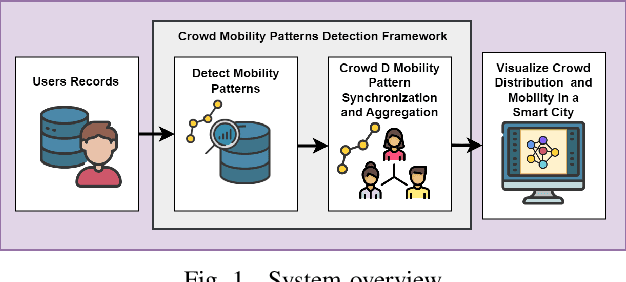
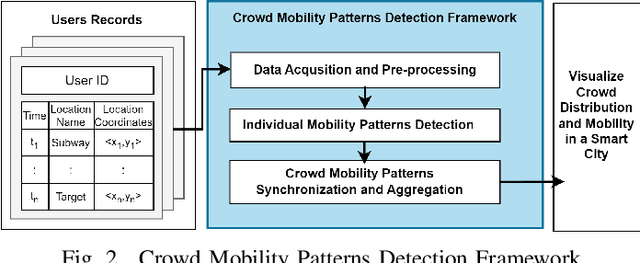
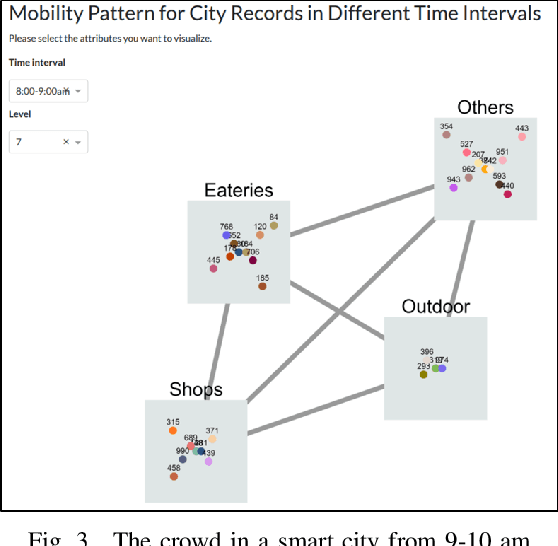
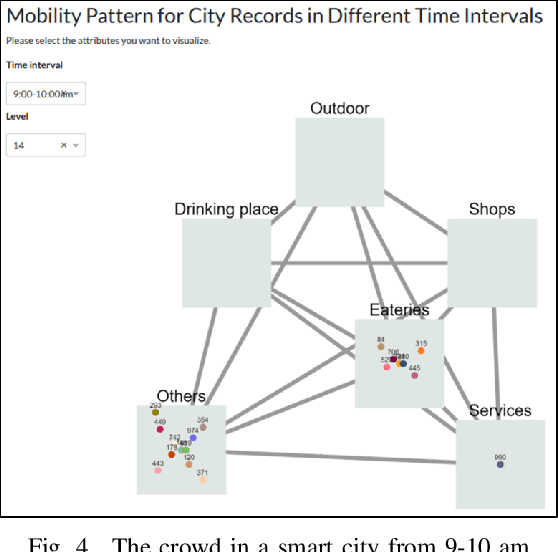
Abstract:Human mobility patterns refer to the regularities and trends in the way people move, travel, or navigate through different geographical locations over time. Detecting human mobility patterns is essential for a variety of applications, including smart cities, transportation management, and disaster response. The accuracy of current mobility prediction models is less than 25%. The low accuracy is mainly due to the fluid nature of human movement. Typically, humans do not adhere to rigid patterns in their daily activities, making it difficult to identify hidden regularities in their data. To address this issue, we proposed a web platform to visualize human mobility patterns by abstracting the locations into a set of places to detect more realistic patterns. However, the platform was initially designed to detect individual mobility patterns, making it unsuitable for representing the crowd in a smart city scale. Therefore, we extend the platform to visualize the mobility of multiple users from a city-scale perspective. Our platform allows users to visualize a graph of visited places based on their historical records using a modified PrefixSpan approach. Additionally, the platform synchronizes, aggregates, and displays crowd mobility patterns across various time intervals within a smart city. We showcase our platform using a real dataset.
IMAP: Individual huMAn mobility Patterns visualizing platform
Sep 08, 2022
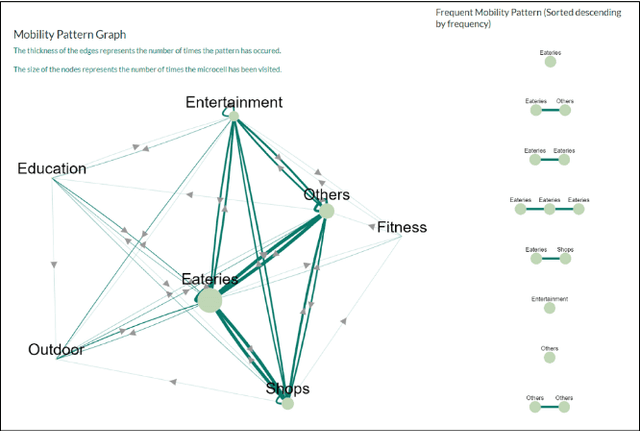
Abstract:Understanding human mobility is essential for the development of smart cities and social behavior research. Human mobility models may be used in numerous applications, including pandemic control, urban planning, and traffic management. The existing models' accuracy in predicting users' mobility patterns is less than 25%. The low accuracy may be justified by the flexible nature of the human movement. Indeed, humans are not rigid in their daily movement. In addition, the rigid mobility models may result in missing the hidden regularities in users' records. Thus, we propose a novel perspective to study and analyze human mobility patterns and capture their flexibility. Typically, the mobility patterns are represented by a sequence of locations. We propose to define the mobility patterns by abstracting these locations into a set of places. Labeling these locations will allow us to detect close-to-reality hidden patterns. We present IMAP, an Individual huMAn mobility Patterns visualizing platform. Our platform enables users to visualize a graph of the places they visited based on their history records. In addition, our platform displays the most frequent mobility patterns computed using a modified PrefixSpan approach.
 Add to Chrome
Add to Chrome Add to Firefox
Add to Firefox Add to Edge
Add to Edge